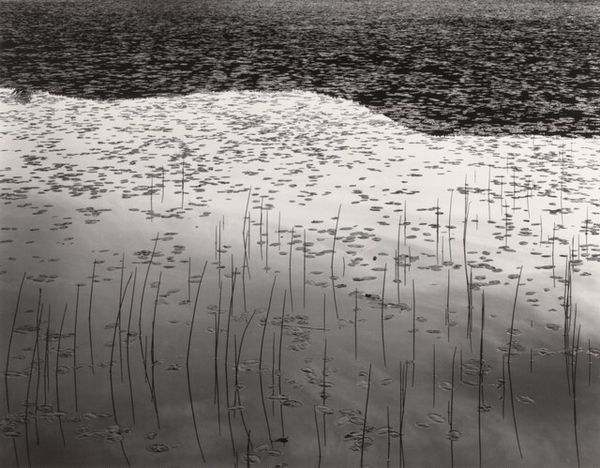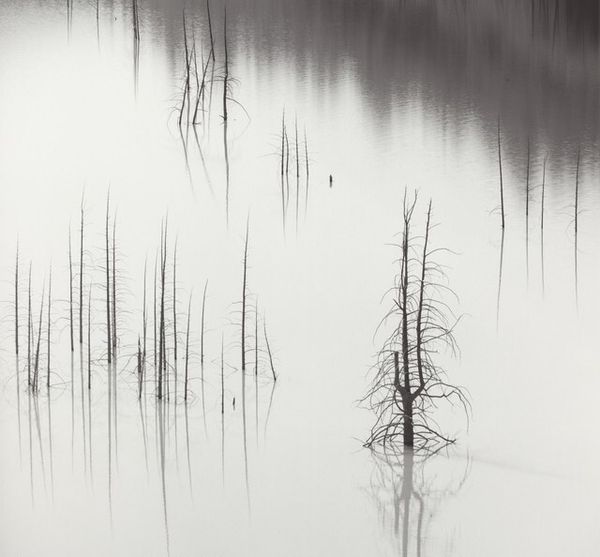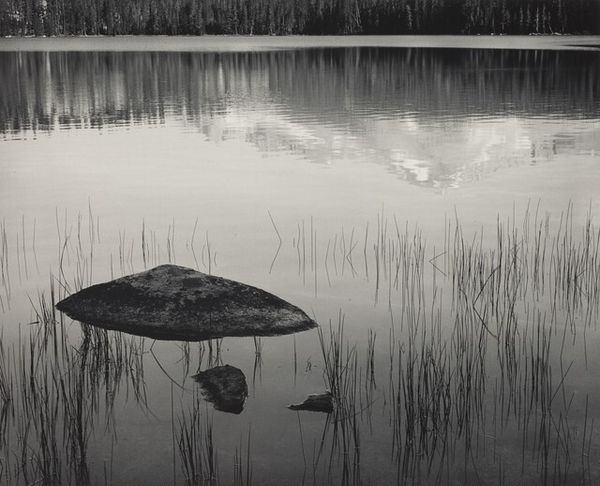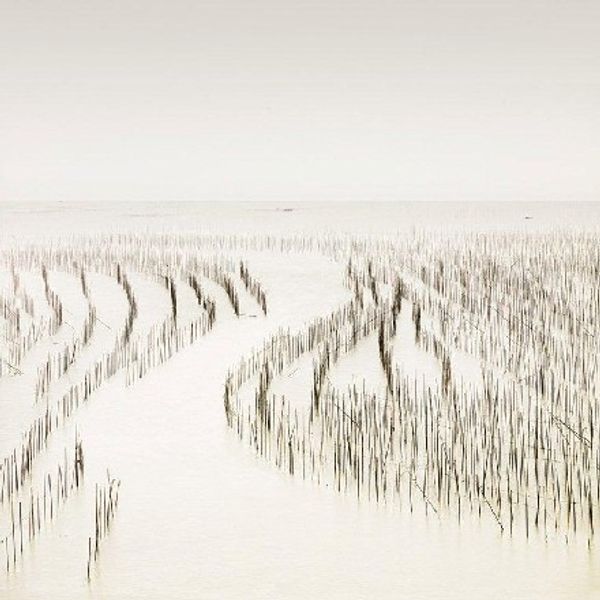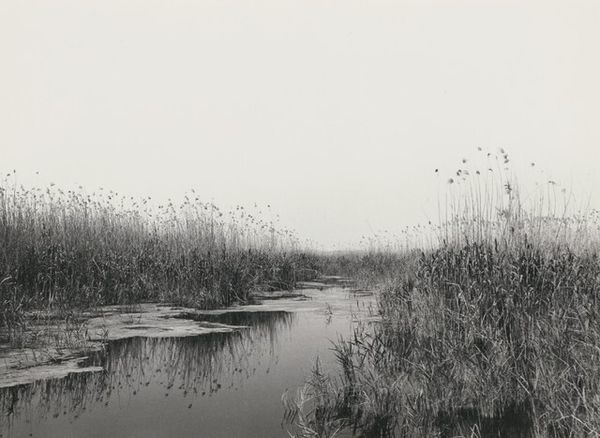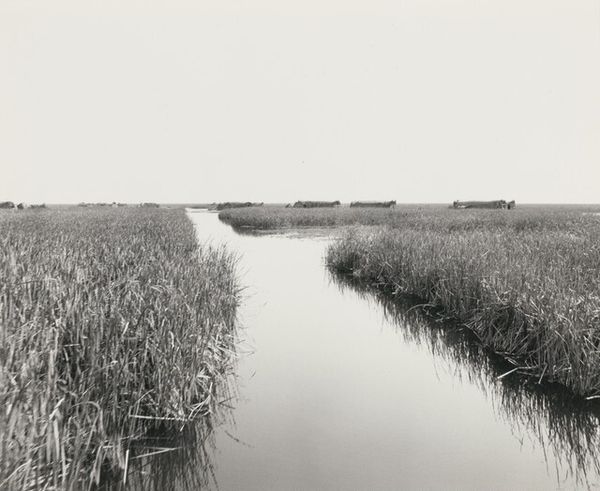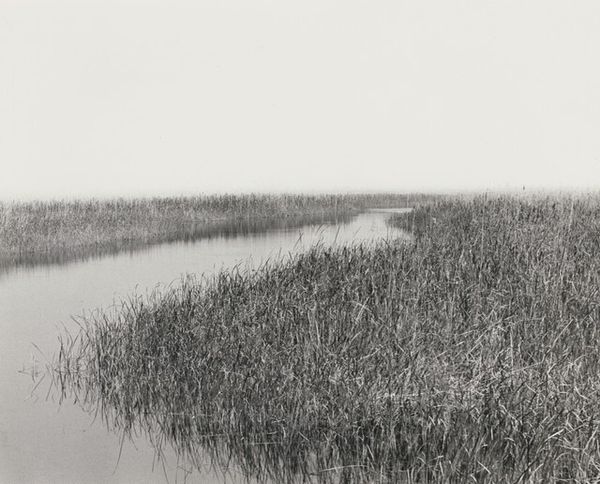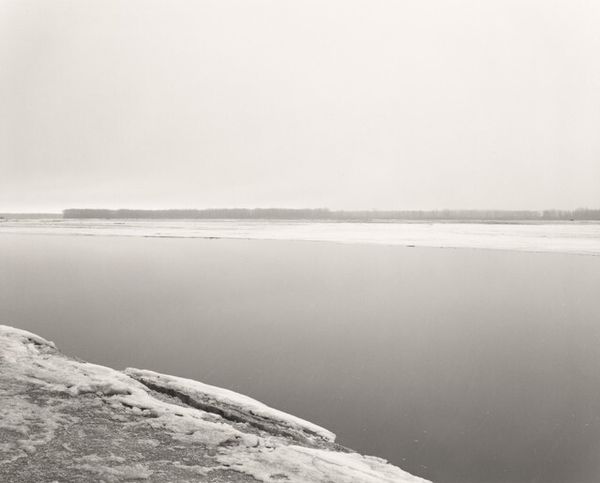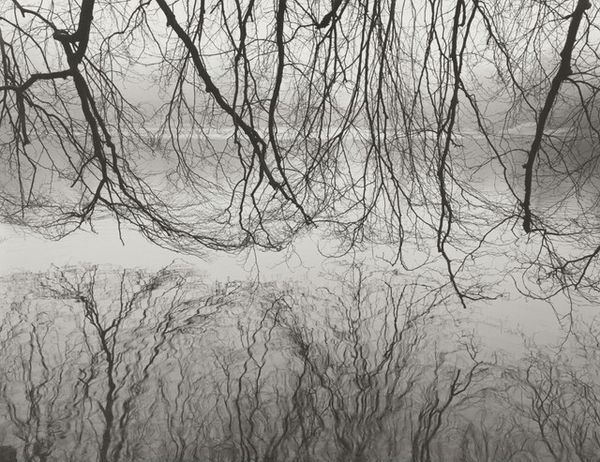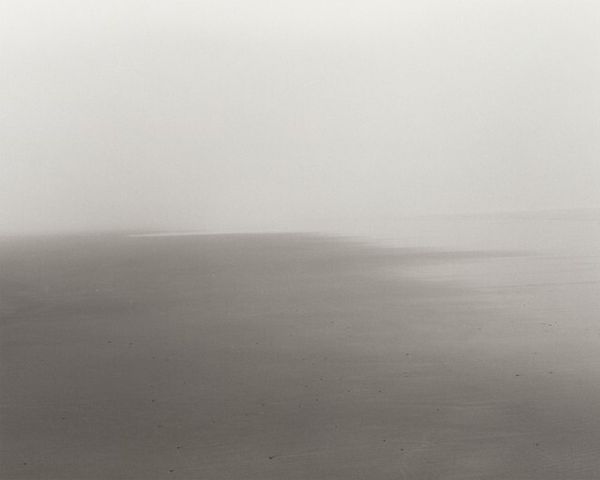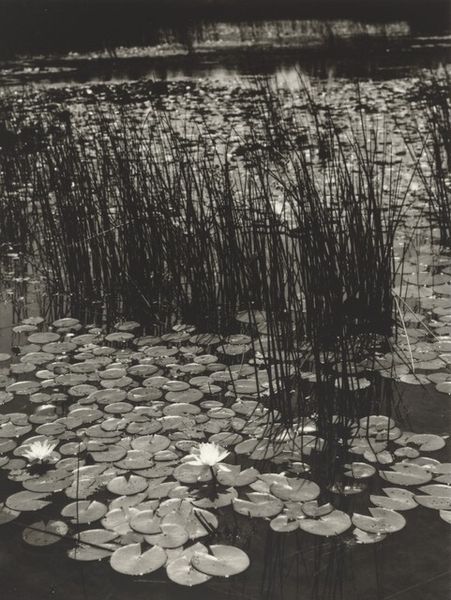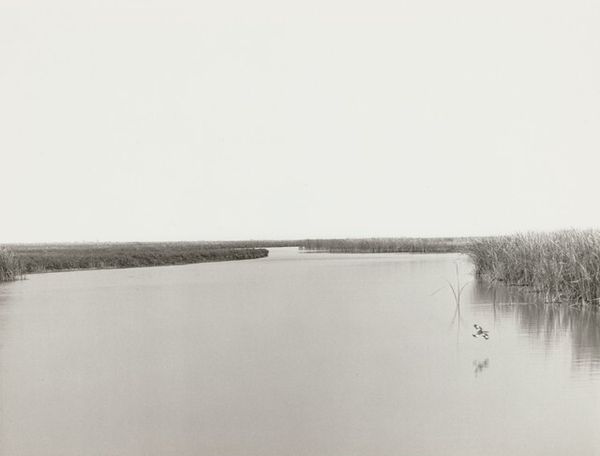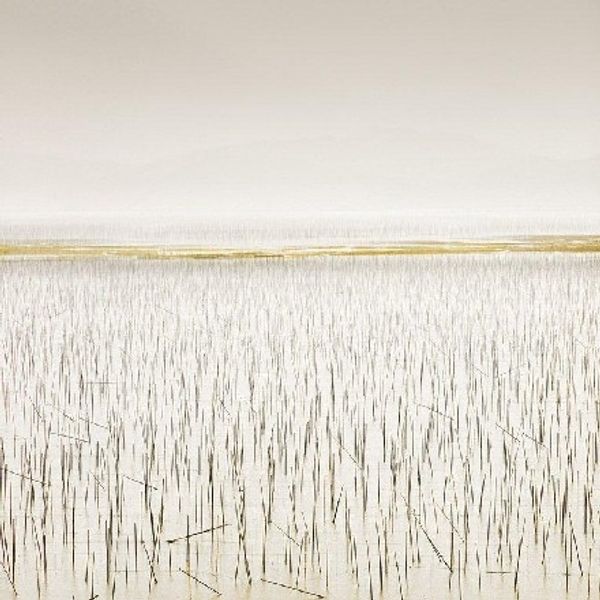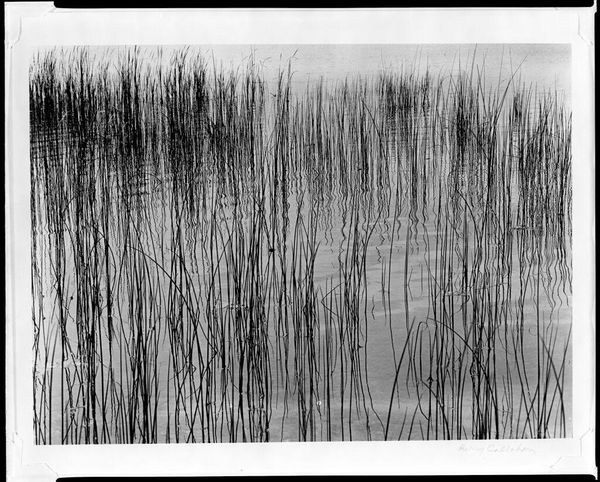
print, photography
#
still-life-photography
#
organic
# print
#
landscape
#
photography
#
abstraction
#
modernism
#
realism
#
monochrome
Dimensions: image: 8.5 × 11.5 cm (3 3/8 × 4 1/2 in.) sheet: 10.5 × 13.5 cm (4 1/8 × 5 5/16 in.)
Copyright: National Gallery of Art: CC0 1.0
Editor: This is Harry Callahan's "Detroit (Reeds in Water)" from 1942, a photographic print. The reeds create a mesmerizing rhythm against the water, it’s quite striking. What do you see in this piece, focusing on the forms themselves? Curator: Precisely. Callahan's photograph offers a complex interplay of line and texture. The verticality of the reeds is immediately apparent, countered by the horizontal plane of the water's surface. The varying thickness and density of the reeds generate a sense of depth, pushing and pulling the viewer's eye. What compositional strategies might Callahan be employing to achieve this visual dynamism? Editor: It seems like he’s using the reflections in the water to mirror and distort the reeds, which creates an almost abstract pattern. Curator: An astute observation. The reflections aren't merely representational, are they? They fracture the linear rigidity, introducing curvilinear elements that soften the overall structure. Consider, too, the tonal range. The subtle gradations of grey and white, the sharp contrast between the dark reeds and the luminous water, add further complexity. How does the materiality of photography—the print itself—contribute to your understanding of the work? Editor: Knowing it’s a photograph, and a black and white one at that, it’s easy to focus on those tonal values. It abstracts what could otherwise be a more standard landscape. Curator: Precisely. Callahan transforms a common scene into a study of form and light. The “realism” you mention is filtered through a formalist lens. Ultimately, it’s an exploration of the inherent qualities of photography. Editor: That reframing of realism is something I hadn’t fully considered. Curator: Indeed. And seeing how Callahan uses formal elements really adds another dimension.
Comments
No comments
Be the first to comment and join the conversation on the ultimate creative platform.
